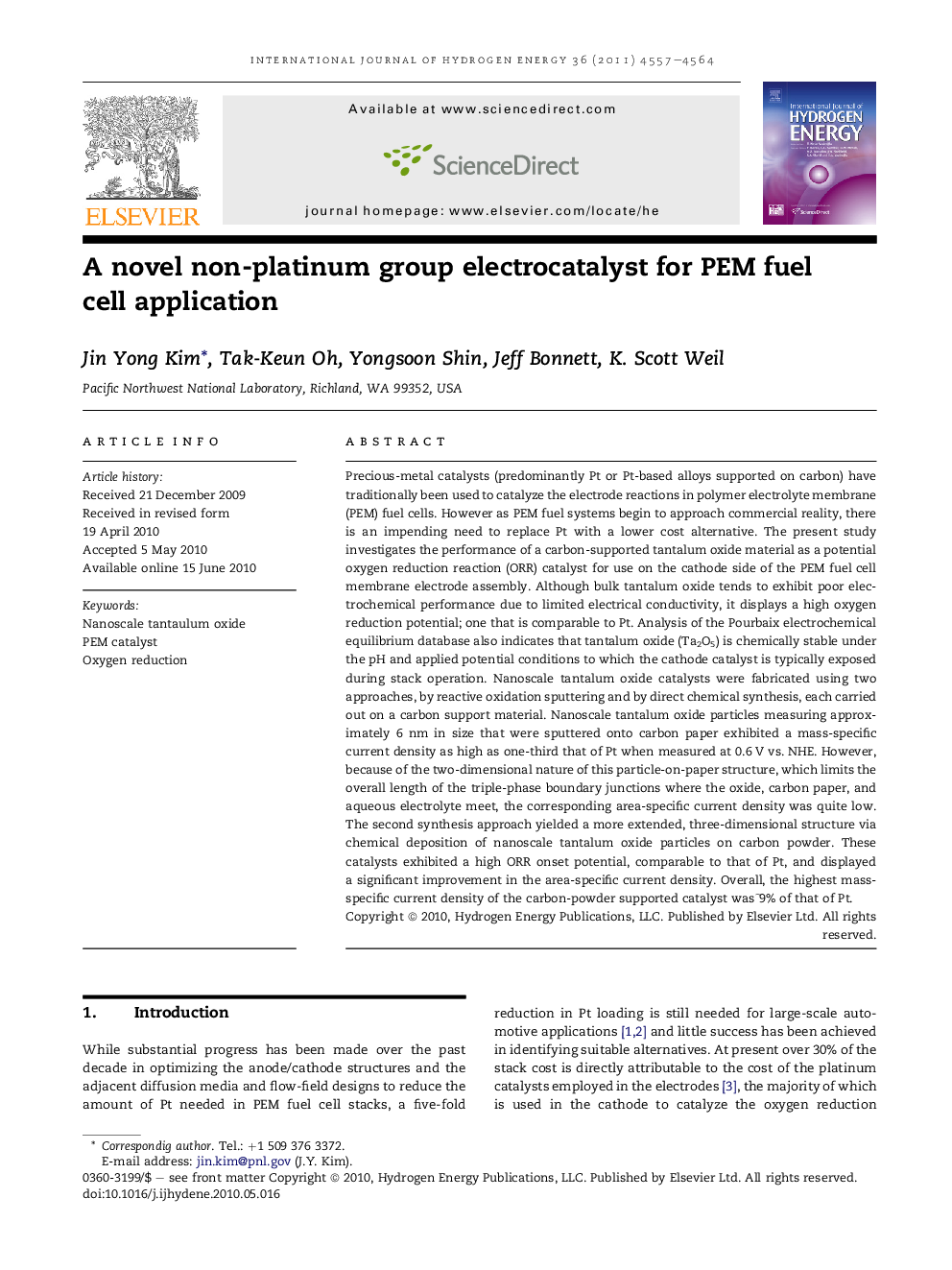| Article ID | Journal | Published Year | Pages | File Type |
|---|---|---|---|---|
| 1276248 | International Journal of Hydrogen Energy | 2011 | 8 Pages |
Precious-metal catalysts (predominantly Pt or Pt-based alloys supported on carbon) have traditionally been used to catalyze the electrode reactions in polymer electrolyte membrane (PEM) fuel cells. However as PEM fuel systems begin to approach commercial reality, there is an impending need to replace Pt with a lower cost alternative. The present study investigates the performance of a carbon-supported tantalum oxide material as a potential oxygen reduction reaction (ORR) catalyst for use on the cathode side of the PEM fuel cell membrane electrode assembly. Although bulk tantalum oxide tends to exhibit poor electrochemical performance due to limited electrical conductivity, it displays a high oxygen reduction potential; one that is comparable to Pt. Analysis of the Pourbaix electrochemical equilibrium database also indicates that tantalum oxide (Ta2O5) is chemically stable under the pH and applied potential conditions to which the cathode catalyst is typically exposed during stack operation. Nanoscale tantalum oxide catalysts were fabricated using two approaches, by reactive oxidation sputtering and by direct chemical synthesis, each carried out on a carbon support material. Nanoscale tantalum oxide particles measuring approximately 6 nm in size that were sputtered onto carbon paper exhibited a mass-specific current density as high as one-third that of Pt when measured at 0.6 V vs. NHE. However, because of the two-dimensional nature of this particle-on-paper structure, which limits the overall length of the triple-phase boundary junctions where the oxide, carbon paper, and aqueous electrolyte meet, the corresponding area-specific current density was quite low. The second synthesis approach yielded a more extended, three-dimensional structure via chemical deposition of nanoscale tantalum oxide particles on carbon powder. These catalysts exhibited a high ORR onset potential, comparable to that of Pt, and displayed a significant improvement in the area-specific current density. Overall, the highest mass-specific current density of the carbon-powder supported catalyst was ˜9% of that of Pt.
